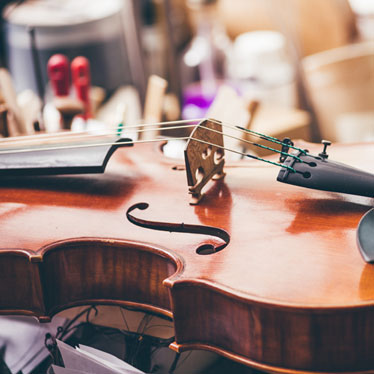Create A First-Aid Kit For Your Violin

You don’t carry around your violin without a protective violin case for good reason. That would be needlessly risky. Even so, little disasters happen to violins all the time. Broken strings, funky pegs – a whole host of issues. They always seem to happen at the worst times. Like before a performance or when you're ready to dig in for a full rehearsal. So why walk around without a first-aid kit for your violin too?
Here’s a list of the basics your violin first-aid kit should include:
Extra strings! Popping a string is probably the most common emergency repair you’ll face. Keep a spare set of strings handy. Your replacement set should include different sizes, just the way a real first aid kit has a variety of bandage sizes. If you want to travel as lightly as possible, limit your spare string selection to those sizes that you break most often. You know what they are.
Peg compound to help quick fix different peg issues. Use it when pegs are slipping or sticky. Peg drops are another option that provides the same repair as the peg compound. However, you can find it in a tube format, which keeps it compact and clean to carry around. It’s like carrying around lip moisturizer for your pegs.
Some narrow, thin slips of paper or leather, which can be used both on the nuts and the bridge if needed. If you hear some strings buzzing, it could be because the nut has worn down. You can fix this in a pinch by loosening the string and placing a little piece of paper or leather into the nut groove. It won't last for long – you will need to get the issue fixed properly as soon as possible. However, the paper or leather will get you through practice or performance if needed. You can also use the thin paper if a groove in the bridge has developed that makes it difficult to avoid hitting two strings at once. Last, these little strips may also help to plug in temporarily any edge seams that have split.
Removable mounting putty is the duct tape of an emergency violin repair. Use it to secure any loose parts on your violin, like your chin rest or tailpiece. You can even use it to re-attach a piece that may have completely detached. Again, this isn't a permanent solution. It's only intended to get you through an emergency situation. That’s why you want to make sure you get removable mounting putty, so it comes off easily when you’re taking your violin in for a permanent fix. This stuff is super cheap, and you’ll only need a small amount for any single emergency.
Having an extra bridge may be useful, but this is tricky. Learning how to replace and stand up a new bridge is a worthwhile skill, but not simple. Still, it may be helpful to carry an extra bridge even if you won't be able to switch it out yourself. Perhaps someone else at the rehearsal or performance can. It's sort of like that spare tire you have in your car that you can't actually change yourself. It's still a good idea to have the spare tire.
Where will you put your kit?
We know – a kit adds more stuff to lug around in your case. A quality violin case will have the room you need to carry additional accessories. Remember, this is an emergency kit, so you don't have to carry around an excessive amount of any of these items.


